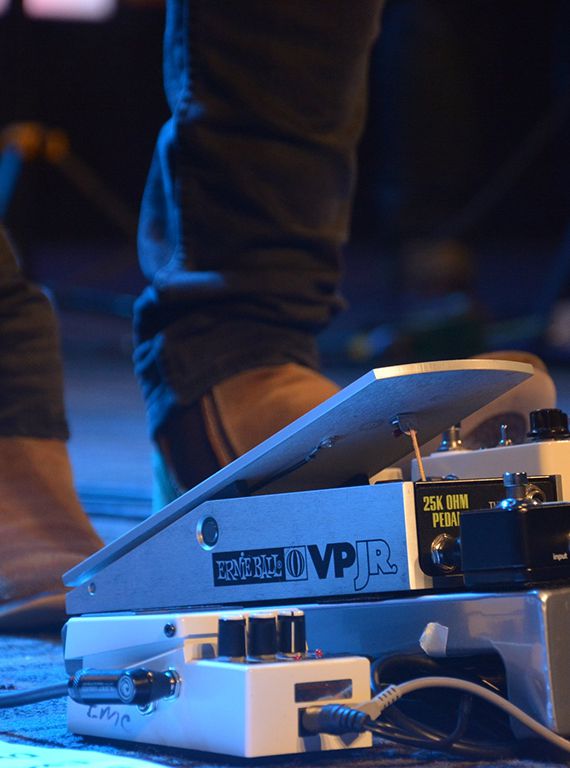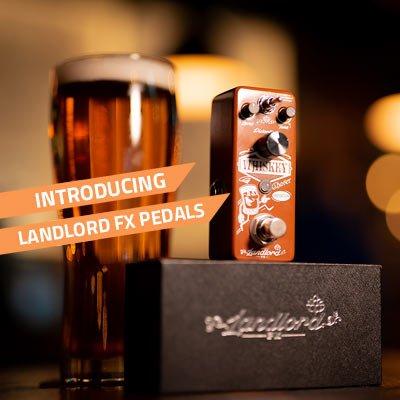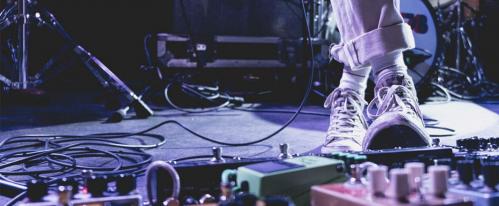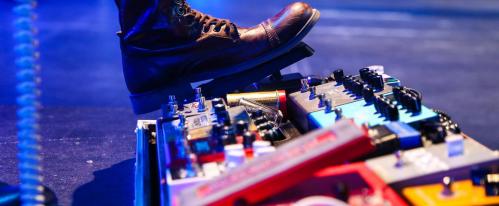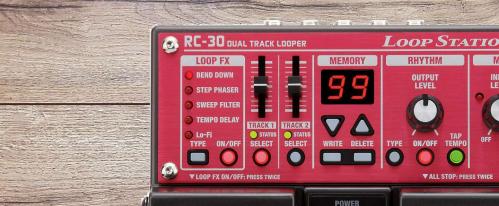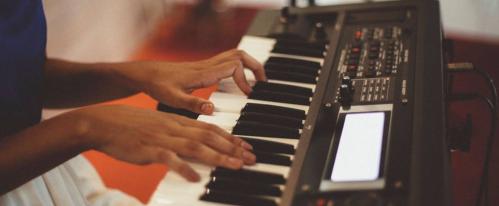WE DISCUSS THE DIFFERENCES BETWEEN TRUE BYPASS AND BUFFERED PEDALS AND SHOW YOU HOW TO IMPROVE YOUR SIGNAL. HERE'S A HINT: IT TAKES MORE THAN JUST DECENT PEDALS!
There are few arguments that really get guitarists fired up more than the age-old question as to whether True Bypass vs Buffered is best for guitar tone.
Whether it’s arguing over silicon vs germanium transistors, humbuckers vs single-coil pickups or whether or not valves need replacing every year in a tube amp (they don’t), somehow the discussion as to whether True Bypass is better than Buffered seems to come up in conversation all the time. So, what’s the difference between true bypass and buffered?
Why does it matter and what’s the right set up for you?
Today, we’re going to take a look at the difference between the two types of pedals, discuss how they work and how they will affect your tone so you can make your own decision on what you need.
THE SIGNAL PATH
Before we delve into whether or not true bypass pedals are better than buffered, or whether buffered pedals colour your tone, we need to understand the signal path and how pedals, and more importantly the size your cables affect the overall sound.
When you plug your guitar or bass straight into your amplifier without any pedals, and with a good quality cable that is less than 15ft, you’ll be getting a strong signal that accurately represents how your guitar is interacting with the amp.
As the guitar is a high impedance device, when you extend the length of the cable over 18.5 ft you’ll automatically start to get degradation of sound and dilute your signal.
This is down to the fact that the signal has to travel further and is called capacitance. The fact of the matter is: the longer the cable, the more it affects your tone.
As most guitarists who gig or play live use anything from 10 to 20 ft cables and longer, you might find that there's a drain your tone and dilution of the signal.
As most of us will be using anywhere from 2 to 8 pedals on your board, that’s at least an extra 6 or so feet of cable - which will dilute it even further.
Not ideal. The rumours are true; size matters. Well, to be more exact the length of your cable matters. But how do we get around this tone drain if we want longer cables? And how will this affect true bypass or buffered pedals?
Let’s find out what they do first.
WHAT DOES TRUE BYPASS MEAN?
A true bypass pedal allows the tone and signal of your guitar to flow through unaffected when the pedal is off. This means that all the tone of your guitar is preserved – the pedal does not colour it at all when it’s not being used.
However, due to the fact the true bypass pedal does nothing to boost or enhance the signal, the more pedals you have and the longer the cable over 18.5ft, the more degradation and tone loss will occur.
This is great for tone snobs and those who use smaller length cables. *There’s a great video by Pete Thorn discussing how true bypass and longer cables cause high end roll off. Watch it at the bottom of the page.
WHAT DOES BUFFERED MEAN?
A buffered pedal strengthens your tone and drives it through the chain, restoring the signal and tone to what it should be. A buffer does this at all times, whether the pedal is on or off.
If you are using longer cables over 18.5ft on both sides of the pedal i.e. guitar to pedal to amp, then a buffered pedal will preserve the signal and push it to the amp.
Imagine it as someone cheering you on.
You have the tone, but there’s something supporting it and helping you get there safely.
Some guitarists will argue that a buffered pedal will add too much high end, when in reality it provides a far more pronounced and responsive signal.
WHICH IS BETTER: TRUE BYPASS OR BUFFERED?
The truth is, there’s no right or wrong answer to this question as both types of pedals have their benefits and disadvantages. Let's pit True Bypass VS Buffered and find out the differences.
BENEFITS OF TRUE BYPASS
If you have a short signal chain, i.e. a 10ft guitar lead and two pedals through to the amp via a 6ft lead, then you should be OK with a true bypass set up as the signal doesn’t have far to go.
If you want every nuance of your tone unaffected and clean then true bypass is a great option.
DISADVANTAGES OF TRUE BYPASS
If you’re running a lot of pedals as most musicians do these days, through a 20ft cable from guitar to pedalboard and pedal board to amp, using only true bypass will affect your signal and drain your tone.
The key is to use as short a cable as possible, otherwise you’ll get some high end roll off.
BENEFITS OF BUFFERED PEDALS
If you’re running long cables and more than 2 pedals, a buffered pedal will restore and strengthen the signal ensuring the amp gets all that juicy goodness from your guitar.
A buffered pedal makes sure everything is heard how it should be.
DISADVANTAGES OF BUFFERED PEDALS
There’s no real disadvantages to buffered pedals at all. Unless you get a badly designed one that drives your signal too hard, there’s not really a downside to using one.
Thanks to the likes of BOSS pedals raising the standard of buffered pedals, they’re the benchmark that pedal companies try to get to when they create a buffered pedal.
Some guitarists will argue that using buffered pedals exclusively will change your sound, but this comes down to personal preference really.
To be quite honest, it will only strengthen the signal, rather than colour it.
SO WHAT'S THE DIFFERENCES BETWEEN TRUE BYPASS AND BUFFERED?
In summary, the differences between true bypass and buffered come down to this; True Bypass is a clear unaffected signal. Buffered is essentially a boosted/restored signal.

THE VERDICT
If we can give you any advice it would be to mix and match your pedals, and above all, invest in good quality guitar leads at all times.
Not every pedal is true bypass and not all pedals are buffered, so unless you only want one type of brand on your pedalboard, you’re best off mixing and matching pedals with a combination of buffered and true bypass pedals.
You can enjoy good tone, and an array of excellent effects using a combination of true bypass and buffered, the key is just making sure you have at least one buffered pedal on your board and making sure you’re not using cheap knock-off pedals with inferior parts.
It's a good idea to arrange your pedalboard with a buffered pedal at the start of the chain as this takes your tone from the guitar and strengthens it before it gets to your pedals.
As most guitarists put a tuner at the start of the chain (from guitar to tuner), we’d definitely recommend the industry standard BOSS TU-3 tuner as this will inevitably boost the signal and help push the signal to the amp.
If you only place a buffer at the end, you’re pushing a degraded signal, so it’s best to place one at the start as the signal is purer. Feel free to buy whatever pedal you want, and throw whatever you want on your board, both true bypass and buffered, and if you want to be sure the signal is strong just add a final buffered pedal at the end.
This way you have a strong signal passing from your guitar to pedals and eventually to your amp aided by a buffer. Remember, as true bypass pedals do not enhance the signal, if your signal is weak going to a true bypass effect, you won’t get the best out of it.
If it’s being supported by a buffer – everyone wins, and they’ll make your true bypass pedals perform better! As we’ve mentioned, the quality of your cables is important.
So, invest in something like Fender or TOURTECH guitar cables and high-quality patch cables such as the MXR mono 6" jack cables and the Planet Waves Solderless Custom Patch Cable Kit, they’re reliable and used by professionals all over the world.
There’s no point spending thousands on a good guitar, amp and pedals only to ruin your sound with cheap leads! Get the good stuff and it will last a lifetime and keep you sounding your best.
BEST TRUE BYPASS PEDALS
We’ve selected a few of the best true bypass pedals available today. These pedals are reliable, made with high-quality components and ensure your tone passes through as clean as possible.
Perfect for those who want an uninterrupted signal or guitarists who only need one or two pedals.
EARTHQUAKER DEVICES HOOF FUZZ PEDAL V2
The EarthQuaker Devices Hoof Fuzz Pedal V2 is a beautifully designed fuzz pedal hand made by the team in Akron, Ohio USA.
Due to the fact it's based on the classic green Russian muff-style fuzz circuit, you have a wide gain range, so it packs a huge amount of power and can go from fizzy, tube drenched drive to complete fuzz madness.
This True Bypass pedal is all analogue so it won't colour your tone whatsoever when it's not engaged.
It also features silent switching too, so when you do decide to charge headfirst into fuzz territory, there's no annoying pop beforehand.
ELECTRO HARMONIX SOUL FOOD TRANSPARENT OVERDRIVE PEDAL
The Electro Harmonix Soul Food is an interesting pedal. Not only is it an absolutely awesome overdrive pedal inspired by one the best distortion pedals of all time: the Klon Centaur, it's also a 'best of both worlds' pedal capable of switching between true bypass and buffered.
If you're recording in a studio setting, the true bypass setting really comes in to play here as it ensures nothing is colouring your tone.
Fortunately, the team at EHX have included the ability to switch the pedal to buffered, so when you're running it as part of a bigger pedal rig or using larger cables, your signal is boosted.
An awesome feature and an amazing sounding overdrive pedal that can go from smooth, creamy distortion to that coveted broken-up tube sound easily.
There's also a bass version too!
JIM DUNLOP GCB95F CRYBABY CLASSIC
Vintage Wah pedals would once drain your tone and sap a huge amount of juice out of your signal, making them a difficult pedal to use if you were running a selection of pedals.
It would also make a horrible click when you activated it - not ideal if you were running a delay pedal as you'd have a succession of pops coming out of your amplifier.
Fortunately, those days are long gone and the brand new Jim Dunlop GCB95F Crybaby Classic features an all-new hard-wired bypass feature that allows your signal to travel through the pedal unaffected and gets rid of those nasty pops.
The GCB95F is the new industry standard wah, and thanks to the dry signal path, rugged construction and amazing response, it's easy to see (and hear) why.
This is the Wah pedal you're looking for!
BEST BUFFERED PEDALS
These are some of the best buffered guitar pedals available today.
These pedals improve and strengthen your signal to provide you with a strong sound throughout the chain and are capable of revitalising a somewhat dull sound, bringing back the high end and are perfect for those who run a longer cable set up or a selection of pedals on a pedal board.
BOSS TU-3 CHROMATIC TUNER PEDAL
Well, we simply had to include the most useful buffered pedal of all time!
The Boss TU-3 Chromatic Tuner is not only the industry standard tuner pedal, capable of tuning to a myriad of different tuning setups, it can also power a range of different pedals and strengthen your signal.
You'll find it difficult to find a professional pedalboard without one of these or one of the many versions of the Boss TU tuner on it.
It's that good.
Quick, precise tuning, bright LED display, robust construction and a buffered signal to keep your sound strong - there's no excuse for not having one of these on your board.
Fortunately, all boss pedals are buffered, so even if you already have a tuner, any pedal from the great range will help improve your signal.
ORANGE AMP DETONATOR SWITCHER
The Orange Amp Detonator Switcher is a buffered ABY pedal.
You read that correctly: it's a buffered ABY amp switcher.
Anyone that runs two amps together at the same time will understand the pain involved trying to preserve your tone in a true bypass ABY box.
Well, the Detonator restores the high end roll off that can sometimes occur when using certain ABY switches via buffered circuitry, which means your signal gets to both amps the way it's intended - strong.
It can be powered via 9V battery or 9-12V adapter so you have the options you need. Lead designer Adrian Emsley has also included a push button phase switch, which will bring your amps back in to phase with each and ensure that bottom end is preserved on stage.
If you care about your tone and you're running two amps together in a live or recording scenario, this is an essential purchase.
FENDER LEVEL SET BUFFER PEDAL
There's nothing worse than a loss of signal and the larger your rig the more likely you are to suffer that signal loss, affecting your tone negatively.
Fender has created the perfect buffer pedal to counteract this.
The Fender Level Set Buffer Pedal allows you to restore your level and even create the perfect middle ground so there's no loss in signal when you switch from single coils to humbuckers.
You can set the "Level", "Hi-Freq", and "Load" via robust control pots for adjusting the signal.
There's also a handy Tuner output which allows you to keep your tuner on at all times without muting the sound.
This is one of the best buffer pedals if you use multiple guitars or a lot of pedals
View a full range of guitar and bass effects over at PMT Online.
Updated: 2020-07-01

